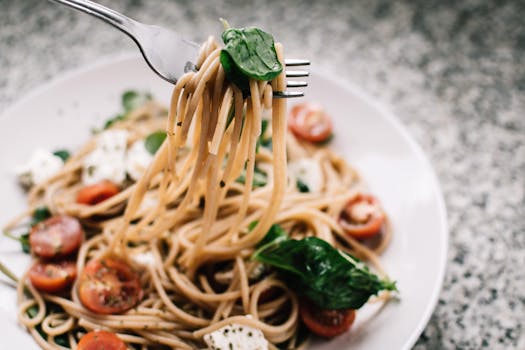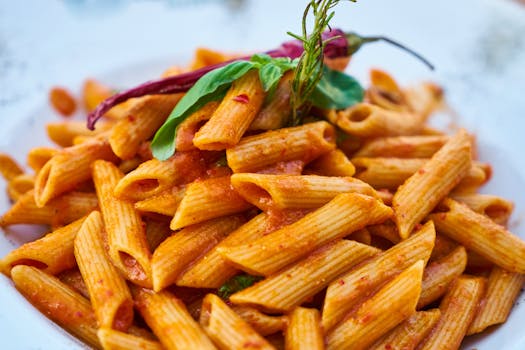Benefits
Energy Provision
Nutritional Value
Dietary Fiber
Versatility in Cooking
Get creative with pasta
Turning pasta into a crunchy salad topping by baking it until crispy can offer an unexpected texture twist to your greens
Pasta can also serve as a unique base for desserts; imagine a sweet spaghetti pie, combining tender pasta with creamy fillings and fruit or chocolate
Another inventive application is crafting edible bowls from baked pasta, perfect for serving dips or salads, adding a delightful and interactive element to meals
Lastly, pasta can be used as an artistic medium, dyed in various colors to create edible crafts or decorations, making meals visually stunning and engaging
Something you can make with pasta
Origin
Pasta is believed to have originated in ancient China around 5000 BCE. It was made from a mixture of wheat flour and water, which was then shaped into various forms and dried. The Chinese introduced this early form of pasta to the Italians during the 13th century through the Silk Road trade route.\n\nHowever, it was in Italy where pasta truly became popular and evolved into the diverse range of shapes and varieties we know today. Italian pasta-making techniques and recipes were refined over the centuries, and pasta became a staple food in Italian cuisine.\n\nFrom Italy, pasta spread to other parts of Europe and eventually to the rest of the world through exploration and global trade. Today, pasta is enjoyed in various forms and preparations across different cultures and cuisines, making it one of the most widely consumed and beloved ingredients worldwide.


